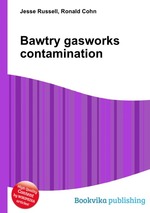Bawtry gasworks contamination
Jesse Russell Ronald Cohn
бумажная книга
High Quality Content by WIKIPEDIA articles! The Bawtry gasworks contamination involved the contamination of land at Bawtry, South Yorkshire, England with hazardous by-products from the manufacture of coal gas. Remediation of the land was carried out at public expense by the Environment Agency (EA), who then sought to recover the costs from National Grid Gas (NGG), then known as Transco, declaring it the "appropriate person" under Part IIA of the Environmental Protection Act 1990 and therefore liable on the basis that the contamination was caused by one or more of its statutory predecessors. NGG sought a judicial review in the High Court of Justice where Mr. Justice Forbes ruled that they were liable for the costs of the decontamination work. The ruling was considered a crucial issue by NGG as, if they were deemed liable in this particular instance, then they could be found liable in a substantial number, possibly thousands, of other cases involving former gasworks. The case was the first time that a UK business had been pursued through the courts to pay the remediation costs for land which was contaminated by utility companies no longer in existence. Phil Kirby, the managing director of NGG, said: "If this judgment were allowed to stand it would inappropriately allocate liability and discourage brownfield land being brought back into beneficial use." They appealed to the House of Lords, who overturned the previous ruling, stating "National Grid did not cause or knowingly permit any substances to be in, on or under the land. This was done by East Midlands Gas Board or its predecessor gas undertakers many years before National Grid came into existence. There is nothing in the Act to say that an appropriate person shall be deemed to be some other person or which defines who that person shall be." This decision was deemed to have significant implications in determining liability for historic environmental contamination and potentially placed the financial responsibility for remediation of former private commercial sites with public-funded local authorities.


